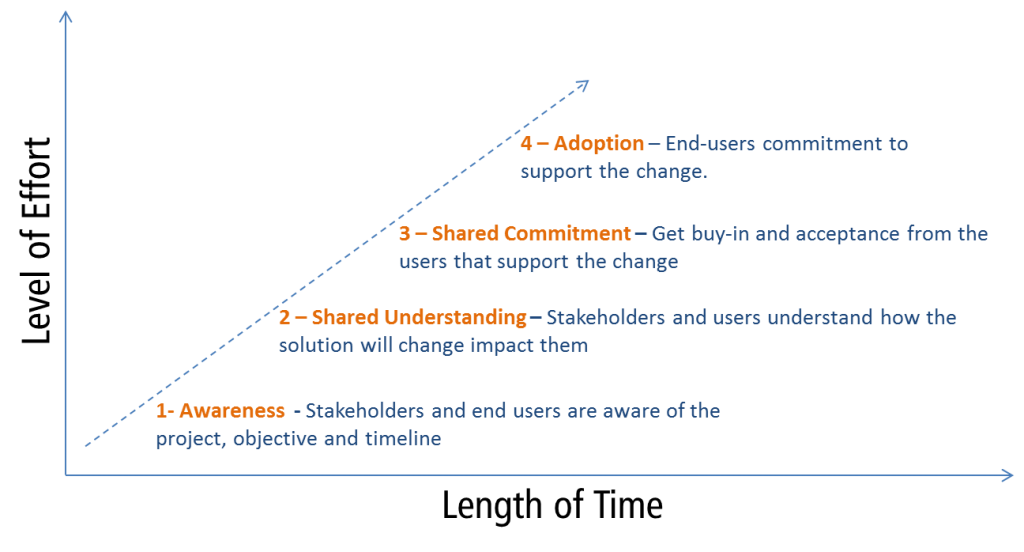Suthasinee Susiva1, Juthamas Vadhanapanich2
1 Graduate School of Commerce, Burapha University
2 Digital Center of Excellence, Banpu Public Company Limited
This article has been granted “Best Paper Award” in the 11th ASEAN+ 9 International Conference on Business, Economics, Finance, and Innovation under the theme of “Opportunities and Challenges for Global Business in Real-Time Economy” hosted by Graduate School of Commerce (GSC), Burapha University and other seven universities, on July 9th, 2020. It has been published as conference proceeding page 169-179.
ABSTRACT
A clear understanding of both customer experience and user experience is crucial to businesses especially with companies that operate both online and offline. This research aims to elaborate the differences between customer experience and user experience from academic and practitioner perspectives as well as to draw a line to separate both terms for the future research. Definitions of both terms were gathering from both academic journals as well as publications by practitioners who are considered experts and work on both customer experience and user experience domains from various industries. The data were synthesized and summarized into themes and categories to identify similarities and differences between both terms and then propose new definitions and scopes of each term that captures both academic and practitioner perspectives. The definitions and scopes will be used as a ground concept for empirical research in the future.
Keywords: Customer Experience; User Experience; Customer Experience Management; Documentary Research
Introduction
Creating a great user experience is a major goal of many technology-led companies as well as customer experience. Customer experience has been in focus of both marketing academics and practitioners for over 60 years (Lemon and Verhoef, 2016; Abbott, 1955 and Alderson, 1957) specifically when talking about customer satisfaction. Human behavior and customer experience were also embraced into marketing practices as well as the growing path of experiential theorists especially in 1980s (e.g. Hirschman and Holbrook, 1982; Thompson, Locander and Pollio, 1989). However, user experience has been brought into wider knowledge in mid-1990s by Donald Norman (1988) in which marked a shift from the previous term “user centered system design” where emphasis on the system and the aesthetics of the interface, yet Norman has instead shifted the focus into the needs of the user (Norman, 1988; Norman, 2018). The reason for him to invent the term is human interface and usability were too narrow and he wanted to cover all aspects of the person’s experience with the system, which including industrial design graphics, the interface, the physical interaction, and the manual. Since then, the term has spread widely so that it is starting to lose its original meaning.
Further when start-ups companies or technology-led companies grow with their businesses and realized the needs of marketing practices where marketers are working with satisfying customer experiences. This creates confusion between customer experience and user experience. It will become more confused when the companies working in omni channels environments where they have both users and customers. Are they the same people? Some people may say yes; some may say no, and both answers were correct at different circumstances. Some users become the company’s customers; some may not.
Roles and responsibilities of those who work with user experience and customer experience are therefore different. So, what are the differences? The researcher has attempted to answer those questions and found that the academic and practitioner understanding about these terms are different. This research aims at proposing definitions for both terms by compare and contrast the academic and practitioner perspectives toward both terms.
Objectives of the study
- To compare the definitions of customer experience and user experience in academic and practitioner perspectives
- To propose definitions and scopes of customer experience and user experience that would meet both perspectives
Conceptual framework

Literature reviews
There are three main sections of literature reviews starting with comparison of the meaning of customers and users. Then the second topic, we will discuss on literature reviews of customer experience, and finally on the last section, user experience will be discussed.
Customer experience and user experience are different on their first word “customer” and “user”. There are a few definitions of the term “customer.” Bloomenthal (2020) defined “customer” as “Customers are the individuals and businesses that purchase goods and services from another business.”. Business Dictionary (2019) defined it as “a party that receives or consumes products (goods or services) and has the ability to choose between different products and suppliers.” User is simpler, it refers to the one who use or interact with the systems (Norman, 2013).
When consider the similar part, “experience” is the process of getting knowledge or skill from doing, seeing, or feeling things, or it can also refer to something that happens to you that affects how you feel (Cambridge Dictionary, 2019).
Definitions of Customer Experience and its origin
When combine these two parts together, the meaning of customer experience can be defined as multidimensional construct focusing on a customer’s cognitive, emotional, behavioral, sensorial, and social responses to a company’s offerings during the customer’s entire purchase journey (Lemon and Verhoef, 2016). Schwager and Meyer (2007) discussed that many companies usually measure customer satisfaction yet neglect to measure customer experience as customer experience does encompass more than just satisfaction. However, customer experience concerned with every aspect of the company’s offerings i.e. every value propositions the company propose and/or deliver to the customer, which include quality of customer service, advertising, packaging, product and service features, ease of use, and reliability. Schwager and Meyer (2007) also mentioned that in a company there are a few people responsible to make decision based on these issues, however, no one more senior overseeing everyone efforts. They defined “customer experience” as “internal and subjective response customers have to any direct or indirect contact with a company” (Schwager and Meyer, 2007). Direct contact usually occurs during purchase, use, and/or service and is typically initiated by the customers. The indirect contact most often involves unplanned encounters with representations of a company’s products, services, or brands. It usually happens in the form of word-of-mouth, recommendations, suggestion, or criticisms, advertising, news reports, reviews, etc.
Customer experience becomes increasingly important especially when we are moving into the age of consumer (Kotler, Kartajaya, and Setiawan, 2010), nowadays many people have called it “CX”. However, Fish (2018) and Lemon and Verhoef (2016) had demonstrated that the term has not just yet emerged. Customer experience originates from sources as disparate as call center technology and marketing analytics (Fish, 2018). Lemon and Verhoef (2016) had put effort to summarize the historical perspective on customer experience. They put the literatures into timelines and conclude that customer experience has been studying since 1960s-1970s in the domain of Customer buying behavior especially on process models by Lavidge and Steiner (1961) and Howard and Sheth (1969). Both papers had been contributed that customer experience encompassed path to purchase, however, the studies were board and experiential focus and considered customer experience and customer decision-making as a process. In 1970s, the research had shifted focuses to customer satisfaction and loyalty, Oliver (1980), Zeithaml (1988), Bolton and Drew (1991) Gupta and Zeithaml (2006) identified key metrics to begin to assess overall customer experience, studied empirical linkage models to identify key drivers of the customer experience. They also assessed and evaluated customer perceptions and attitudes about an experience.
Later in 1980s, service quality become significantly important to the success of marketing, Parasuraman, Zeithaml, and Berry (1988), Bitner (1990, 1992), Rust and Chung (2006), Bitner, Ostrom, and Morgan (2008) were focusing on service quality and incorporating atmospherics and environment to the customer experience. They also provided early customer journey mapping through blueprinting, linked marketing, and operations—focus on quality, and identified the specific context and elements of the customer experience. In 1990s, the marketing turns to focus on relationship marketing, a few researchers e.g., Dwyer, Schurr, and Oh (1987), Morgan and Hunt (1994), and Berry (1995) had contributed a few more knowledge to the customer experience. They have expanded the concept of customer experience to B2B contexts, identified key attitudinal drivers, broadened the scope of customer responses considered in the customer experience.
In the 20th Century, customer relationship management was the domain of interest, Reinartz and Kumar (2000), Verhoef (2003), Bolton, Lemon, and Verhoef (2004), Reinartz, Krafft, and Hoyer (2004), Rust, Lemon, and Zeithaml (2004), Payne and Frow (2005), Kumar and Reinartz (2006), Neslin et al. (2006); Kumar and Shah (2009) studied and enabled the return-on-investment assessment, identification of key touch points and drivers, expanded to focus on data driven, incorporated multichannel aspects, identified how specific elements of the customer experience influence each other and business outcomes.
During 2000-2010s, researchers who interested in customer centricity and customer focus had enlarged the domain of customer experience by including customer perspective throughout organization, embedded the customer and customer data deeper into the organization, and focused on redesigning customer experience from customer perspective (Sheth, Sisodia, and Sharma, 2000), (Gulati and Oldroyd, 2005), (Shah et al., 2006). Recently, in 2010s, in the field of customer engagement, Libai et al. (2010), Van Doorn et al. (2010), Brodie et al. (2011), Kumar, Peterson, and Leone (2010), Kumar et al. (2013) and Hollebeek, Glynn, and Brodie (2014) have recognized value of nonpurchase interactions, incorporated positive and negative attitudes, emotions, and behaviors, built conceptual platform to incorporate social media, and more clearly recognized the customer’s role in the experience.
Lemon and Verhoef (2016) have proposed a model that links customer journey and customer experience, so it is easier to create, understand and manage customer experience (See Figure 2). Fish (2018) also said that customer experience is and will continue to adapt, grow, and change in the future.

In Sum, customer experience is related to many topics in both B2B and B2C marketing domains ranging from buying behaviors, customer satisfaction, customer loyalty, service quality, relationship marketing, customer relationship management, customer centricity to customer engagement (See Figure 3). However, it could be evolved based on customer expectation and perception toward products and/or serviced obtained.

Definitions of User Experience and its origin
Since the world first computer was invented, human must interact with machine. At that time, computer was a rare item, people need to learn how to use it and put all effort to make it easy to use from time to time. Later in 1980s, human-computer interaction or HCI was surfaced. HCI is a “multidisciplinary fields of study focusing on the design of computer technology and, in particular, the interaction between humans (the users) and computers” (Interaction Design Foundation, 2020). The HCI related to computer science, cognitive science as well as human factors engineering. Initially, HCI concerned only with computers, it has been expanded to cover almost all forms of information technology design later (Card, Moran, and Newell, 2019).
In design industry, there is another principle called “user centered design” or UCD, which was discussed in a book named “The Design of Everyday Things” by Norman (1988). This book become a principle of product and service designs as well as application and website design later. It was classified as a classic book for designers too (Norman, 1988 and 2013). In this book, Norman (1988) first explains the importance of user-centered design. He said that design decisions should be based on the needs and wants of users. Hence, UCD is an iterative design process in which designers focus on the users and their needs in each phase of the design process.
After the UCD, the designers turned their focuses into “usability.” Nielsen (1994) has defined 10 general principles for interaction design as 1) Visibility of system status, 2) Match between system and the real world, 3) User control and freedom, 4) Consistency and standards, 5) Error prevention, 6) Recognition rather than recall, 7) Flexibility and efficiency of use, 8) Aesthetic and minimalist design, 9) Help users recognize, diagnose, and recover from errors, and 10) Help and documentation. However, with usability, the product and/or service is only easy to use. In 1993, Don Norman coined the term “user experience” for his group at Apple Computer (Neilson, 2017). He is the world first user experience architect appointed by Apple in 1995. Together with the raise of experience economy and the digital transformation in various industries, user experience has been more and more important especially when there are so many start-ups getting into the businesses.
Further, when the digital channel becomes more relevant, UX, an acronym for user experience is used to denote the user experience in a digital channel (Falbe, Anderson, and Frederiksen, 2017). UX focuses on the user’s behavior, attitudes, and emotions while using a digital product, system, and service. According to Falbe, et. al., (2017), there are two different definitions of the term user experience, which are:
- A person’s entire experience using a specific product, system, and/or service – Wikipedia
- User Experience encompasses all aspects of the end-user’s interaction with the company, its service, and its products. – NN Group
The big different between these two definitions are the scope. The first one, UX is about the product; the second one, it is not only about the product, yet includes the interaction with the company as a part of UX too (Falbe, et. al., 2017). Now, let discuss on the scope of the term “user experience”. The term itself is a broad term that can be divided up into four main disciplines: Experience Strategy, Interaction Design, User Research, and Information Architecture (Stevens, 2019).

However, if considering into details on each discipline, user experience has so many sub-disciplines, it is a lot more than just a case of sketching and wireframing. It is a multidisciplinary field, drawing upon elements of cognitive science and psychology, computer science, communication design, usability engineering and more as listed in Figure 5 (Stevens, 2019, and Daffer, 2008).
Jenzer (2020) have divided UX into seven disciplines, which are: 1) user research that is to understand the people who use a product or system through conducting research, 2) information architecture that is to identify and organize information within a product or system in a purposeful and meaningful way, 3) interaction design is to design the interactive behaviors of a product or system with a specific goal or purpose on the usage, 4) usability evaluation is to measure the quality a user’s experience when interacting with the product or system, 5) accessibility evaluation is to measure the quality of a product or system to be accessed irrespective of personal abilities and device properties, 6) visual design, which is designing the visual qualities of a product or system in an aesthetically pleasing way, and 7) content strategy this is related to plan for the creation, delivery, and governance of useful, usable content.

Research methodology
This is an exploratory research, researchers conducting documentary research by collecting and analyzing of relevant articles and books related to customer experience and user experience domains to identify the academic perspective of both terms. In parallel, researchers have collected articles published by practitioners i.e. companies, designers, marketers who are working in related areas on various websites to identify the practitioner perspective of both terms. After that, researchers took those data to underline the similarities and differences between academic and practitioner perspectives. Finally, clear definitions and scopes of the terms “customer experience” and “user experience” were proposed as results of this research.
Results
After synthesis, all documents obtained both online and offline, the researchers have underlines that for customer experience, academic are more focusing on each sub-domain of marketing as discussed earlier, while the practitioners are focuses more on their product or services i.e. industry they are working on. However, the definition of the term “customer experience” is not much different and could be proposed as “It is the end to end (E2E) customer interactions with a brand or a company” (See Figure 6 and 7).
Although there are few academic papers that discussed the definition of user experience compared to the ones that written by the practitioners, the results show that the similarity is that it is an interaction between the user and the products or system, however, it can also be extended into the company or brand too. The differences are more on its scope. Therefore, the researchers would like to propose the definition of the User Experience as “the digital interactions between a user and a company or a brand”. Based on the proposed definitions, User Experience is a subset of customer experience for a company or a brand (See Figure 6 and 7).



Regarding scopes of each term (See Figure 8), since customer experience has far longer in the history, there are lots of different in nature. However, based on the proposed definition, customer experience covers brand reputation, customer services, empathy, value, sales, advertising, marketing, product delivery as well as operation i.e. it is every activity that brand or company touching with its customers including user experience if the brand or the company has its digital footprints.
Further, the user experience is dealing with information architect, usability, competitor analysis, content strategy, visual design, sound, interaction, animation, coding, user research, empathy, prototype, interface, and wireframe. Figure 7 and 8 show scopes of both customers experience and user experience as well as how they intersect with each other and the other related domains.
Discussion
Definitions and scopes of customer experience and user experience are the main results of this research, which can be used to frame conceptual framework for confirmation study so they can be generalization. Further, the definitions of both terms are lean toward the academic perspectives, yet, with the clearer scopes for user experience and eliminate the grey area toward what are the different between customer experience and user experience. The user experience is considering only the digital interactions between users and brands, while customer experience is responsible for every interaction between the customers and the brands.
Bear in mind that users could be anybody that come to use digital product or interact with brand or company without paying any money i.e. not a customer yet.
Conclusion
There are a few similarities and differences between academic and practitioner perspectives toward both terms, especially the scopes. We have proposed the definition of customer experience as “all interactions between a user / a customer with a brand or a company”, while user experience is “digital interaction between a user and a brand or a company.” With these definitions, it is clear that user experience is a subset of customer experience.
Recommendations
With the proposed definitions and scopes of both terms, the academics could use it to further develop their academic research, practitioners would also understand more on their roles and responsibilities as well as be able to apply them into their works to gain better performance in performing activities related to customer experience and user experience. Further, other company functions such as human resource would also be able to use the proposed definitions and the scopes to simplify their human resource activities.
Limitations and recommendations for further study
Definitions and scopes of both terms are defined based on synthesis of literature reviews, further step would be to conduct confirmation research to ensure that the definitions are satisfied both academics and practitioners who work in these areas. Moreover, it would also be great to conduct the study on several industries, so we could understand the different perspectives on each industry too.
References
- Abbott, L. (1955). Quality and Competition. New York: Columbia University Press.
- Alderson, W. (1957). Marketing Behavior and Executive Action: A Functionalist Approach to Marketing Theory. Homewood, IL: Richard D. Irwin.
- Bloomenthal, A. (2020). Customer. Retrieved from https://www.investopedia.com/terms/c/customer.asp.
- Business Dictionary. (2019). Customer. Retrieved from http://www.businessdictionary.com/definition/customer.html.
- Cambridge Dictionary. (2019). Experience. Retrieved from https://dictionary.cambridge.org/dictionary/english/experience.
- Card, S.K., Moran, T.P., and Newell, A. (2019). The Psychology of Human-Computer Interaction. Florida: CRC Press.
- Falbe, T., Anderson, K., and Frederiksen, M. M. (2017). White Hat UX: The Next Generation in user Experience. Denmark.
- Fish, D. (2018). A Brief History of Customer Experience. Retrieved from https://customerthink.com/a-brief-history-of-customer-experience/.
- Interaction Design Foundation. (2020). Human-Computer Interaction (HCI). Retrieved from https://www.interaction-design.org/literature/topics/human-computer-interaction on 31 May 2020.
- Jenser, S. (2020). Typical UX disciplines. Retrieved from https://zonicdesign.ch/methods/typical-ux-disciplines.
- Kotler, P., Kartajaya, H. and Setiawan, I., (2010). Marketing 3.0: From Products to Customers to the Human Spirit. New Jersey: Wiley.
- Lemon, K. N. & Verhoef, P. C. (2016). Understanding Customer Experience Throughout the Customer Journey. Journal of Marketing: AMA/MSI Special Issue, Vol. 80 (November 2016), 69–96.
- Nielsen, J. (1994). Heuristic evaluation. In Nielsen, J., and Mack, R.L. (Eds.), Usability Inspection Methods, John Wiley & Sons, New York, NY.
- Nielsen, J. (2017). A 100-Year View of User Experience. Retrieved from https://www.nngroup.com/articles/100-years-ux/.
- Norman, D. (1988). The Design of Everyday Things. Basic Books, Philadelphia.
- Norman, D. (2013). The Design of Everyday Things: Revised and Expanded Edition. Basic Books, Philadelphia.
- Schwager, A. and Meyer, C. (2007). Understanding Customer Experience, Harvard Business Review, Vol. Feb 2007, Retrieved from https://hbr.org/2007/02/understanding-customer-experience.








